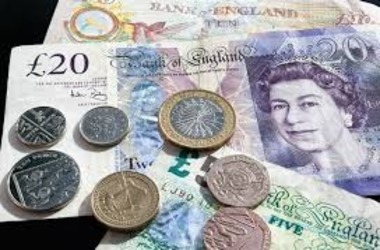 During the Good Friday trading session, the Pound to Dollar exchange rate experienced a reversal of some of the gains made earlier in the week. This was due to the release of non-farm payrolls data, which portrayed a robust outlook for the US labor market. However, the data also confirmed a persistent decline in employment growth and disclosed job losses in certain sectors of the economy. Following the Bureau of Labor Statistics’ announcement that nonfarm payrolls had risen by 236,000 in March, surpassing the consensus but falling short of the upwardly revised 326k in February, the U.S. dollar experienced a brief but significant surge in demand.
During the Good Friday trading session, the Pound to Dollar exchange rate experienced a reversal of some of the gains made earlier in the week. This was due to the release of non-farm payrolls data, which portrayed a robust outlook for the US labor market. However, the data also confirmed a persistent decline in employment growth and disclosed job losses in certain sectors of the economy. Following the Bureau of Labor Statistics’ announcement that nonfarm payrolls had risen by 236,000 in March, surpassing the consensus but falling short of the upwardly revised 326k in February, the U.S. dollar experienced a brief but significant surge in demand.
According to Brent Donnelly, who is the CEO of Spectra Markets and has extensive experience as a trader in hedge funds and major institutions like Lehman Brothers and HSBC, the response of yields and the dollar is in line with conventional expectations. This is because the report was anticipated to be weaker, but it turned out to be strong. From my perspective, the report released today holds little to no significance. Based on the Initial Claims, JOLTS, and other private data, it appears that the labor market in the United States will experience further deterioration in the coming period. Donnelly asserts in the Friday edition of AM/FX that it is highly probable that NFP will be assumed at some point.
Economists had an average forecast of a 228,000 increase in employment, however, the March outcome exceeded expectations. Despite this, the gain was still lower than the average of 334,000 over the previous six months. Additionally, the report highlighted job losses in certain sectors. Borrowing costs implied by Federal Funds rate futures increased marginally on Friday, but the March payroll number and other recently released data prompted some economists to warn that non-farm payroll growth could decline to as low as 50,000 over the next two months.
According to Ian Shepherdson, who holds the position of chief economist at Pantheon Macroeconomics, the rise of 353,000 in private payrolls during January was an atypical occurrence that resulted from the unusually mild winter weather and the limited accumulation of snow in many parts of the nation. Over the preceding half-year period, there has been a slight elevation in the trend, with figures hovering just above the 200,000 mark. According to Shepherdson’s review of the data, it appears that there will be a shift in the current situation due to the noticeable rise in unemployment claims and the decrease in hiring intentions as indicated by the NFIB survey.

As per the report published on Friday, the sectors of warehousing and storage witnessed a decline of around 12,000 job opportunities in the previous month. This trend of job losses is consistent with the pattern observed in other industries, including retail trade, building materials, garden equipment, home furniture, and consumer electronics. During the month of March, these industries experienced a collective decrease of 33,000 job positions. This suggests that the Federal Reserve’s strategy to alleviate inflation by loosening a ‘constricted’ labour market, which is typically associated with escalating wages leading to higher corporate prices, was somewhat effective.
On Friday, the Bureau of Labor Statistics disclosed that the mean hourly wages increased by 4.2% from March of the previous year, which is a decrease from the 4.6% growth rate observed in the year ending February. Although the US Personal Consumption Expenditures inflation decreased to 5% in February, it still exceeded the Federal Reserve’s target of 2%. However, it is unclear how much the Fed will increase interest rates following the Silicon Valley Bank’s collapse in March.

Due to the occurrence and its subsequent effects, the Federal Reserve policymakers maintained their interest rate projections in March, indicating a single further hike in the Fed Funds rate for the year. However, market prices for interest rates suggest that investors and traders are doubtful of the necessity of this increase.
Over the past few weeks, there has been a sudden shift in the interest rate markets, causing a decrease in the value of the Dollar. As a result, there was a temporary increase in the exchange rate between the Pound and the Dollar, which surpassed 1.25 before the Easter holiday. According to Brad Bechtel, who serves as the global director of FX at Jefferies, in the event of a decline from the present peaks, he would purchase GBP/USD and EUR/USD on declines since he believes that the short-term stress on the USD will continue to decrease from its current level.
It is advisable to monitor the AUD/USD pair closely, as a decline caused by data could present a favorable chance to make a purchase. As per Bechtel’s market commentary on Friday, this particular pair is currently confined within a specific range, with the lower limit being 0.6580 and the upper limit being the recent high of 0.6800.




